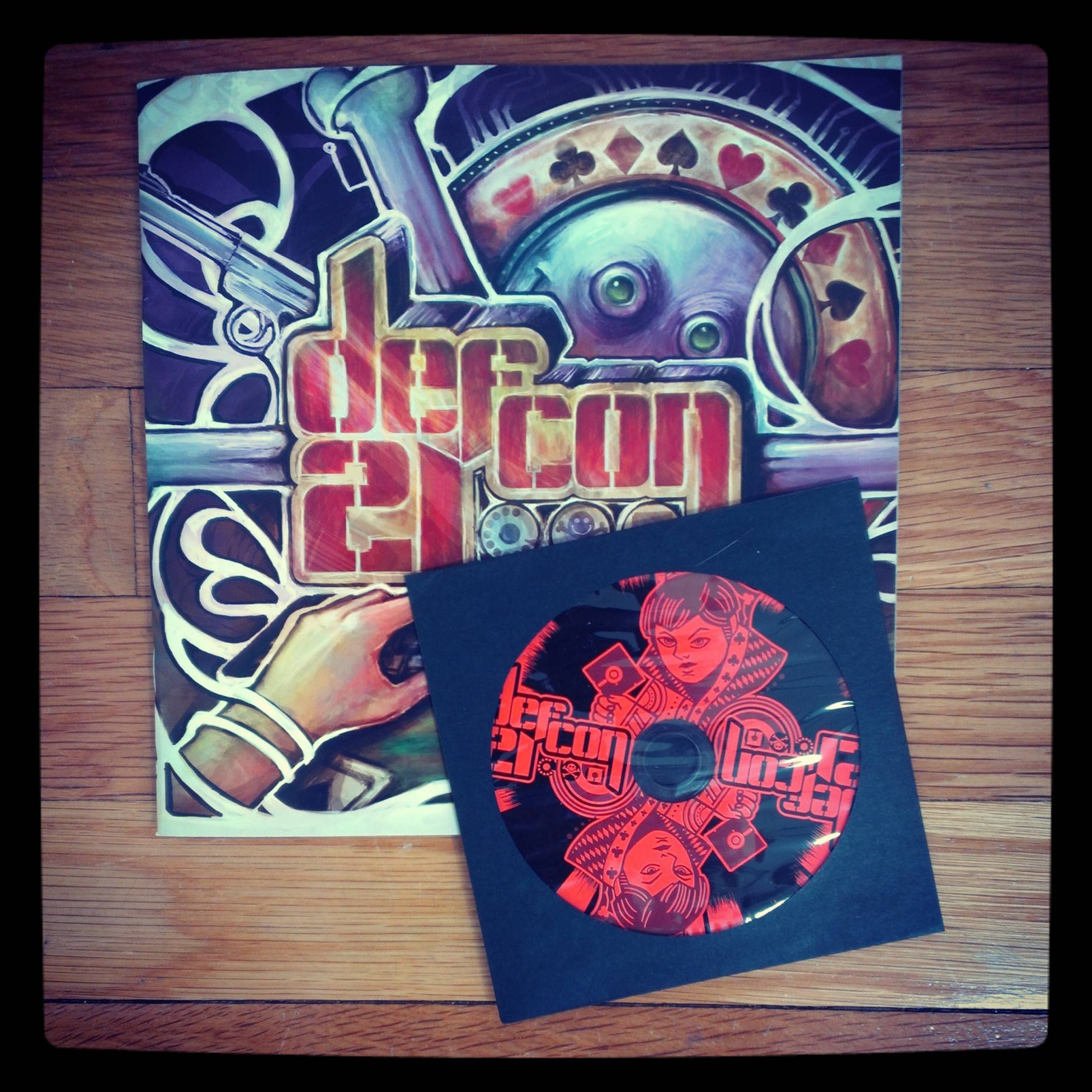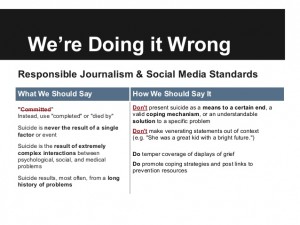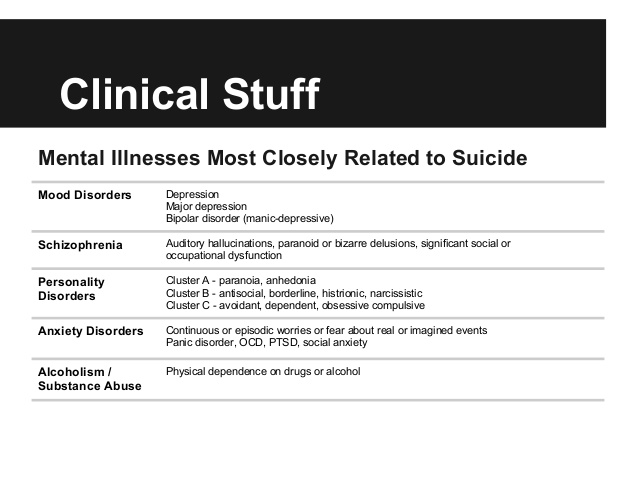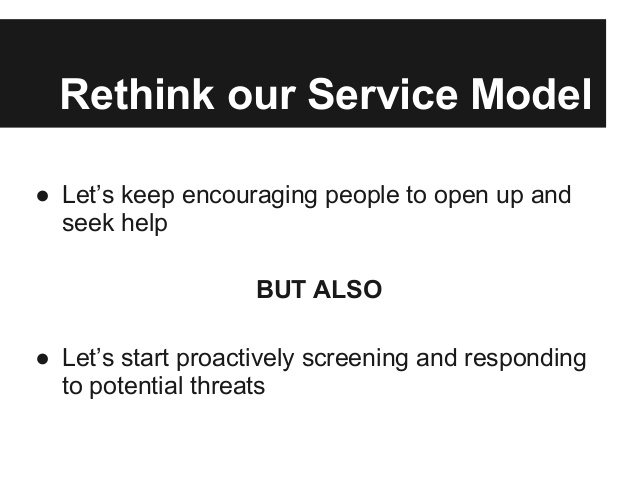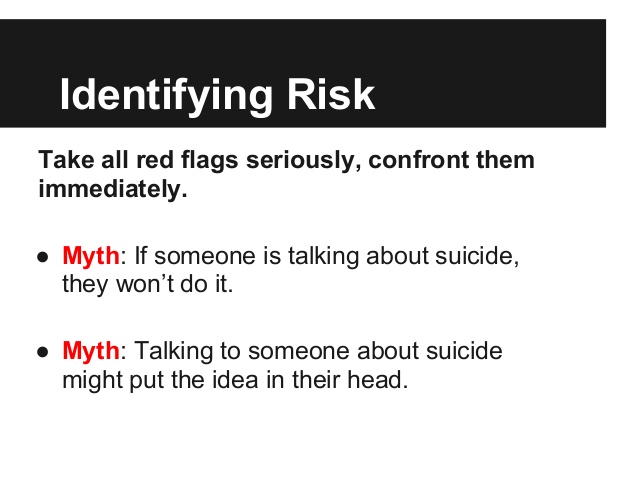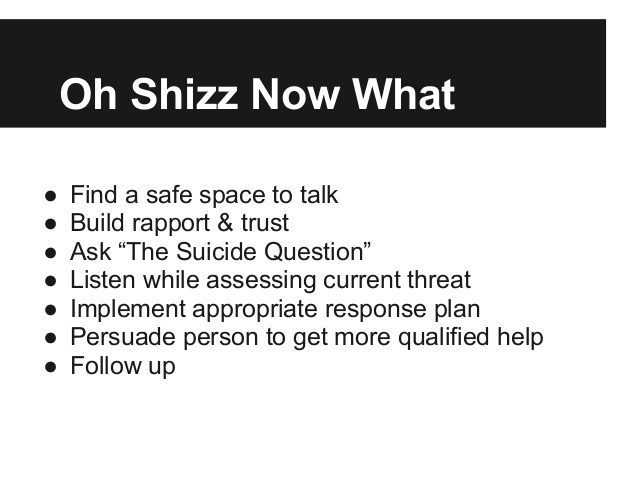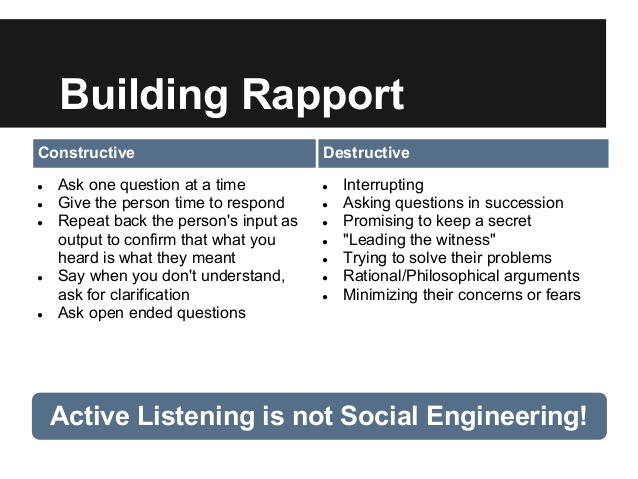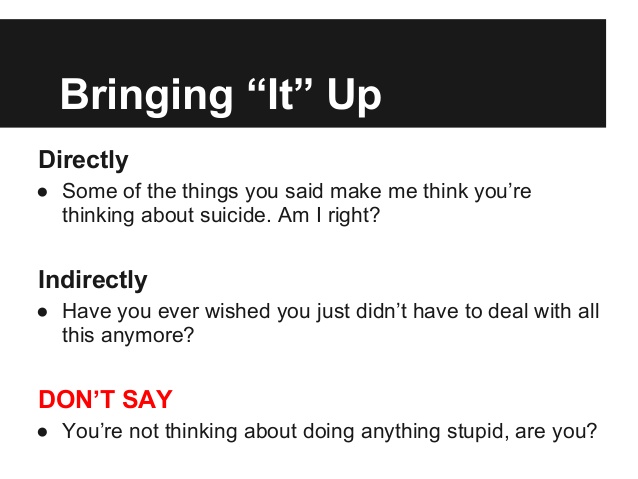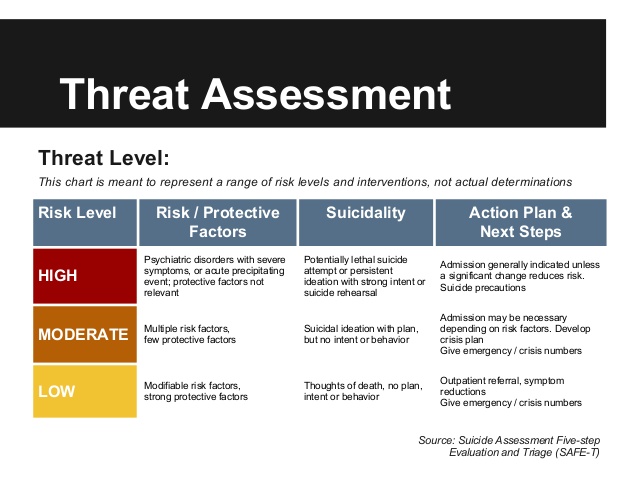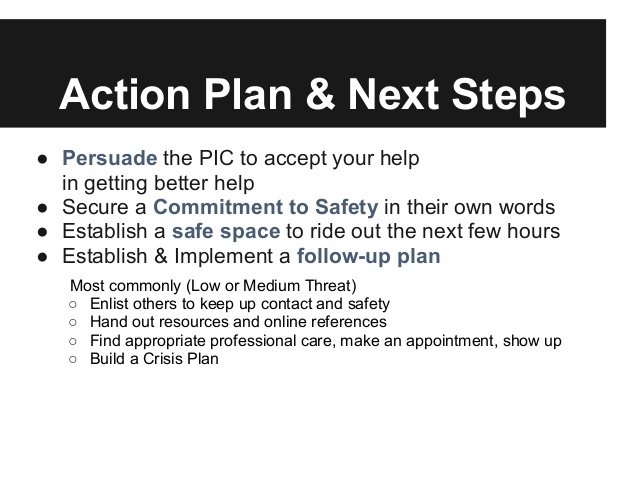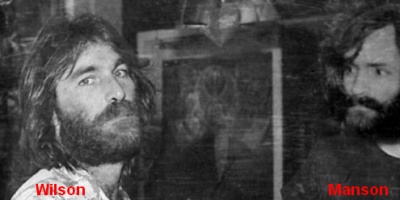Having lost my best friend to suicide in 1996 and suffered my own bouts of depression over the years, I’m grateful for those who rise up to stem the tide of this often-misunderstood scourge. In my industry (information security) I’ve met a lot of good people who suffer in silence. Among them are folks who refuse to sit back and take it.
And so we’ve seen the rise of such endeavors as the Information Technology Burnout Project and talks at a series of hacker conferences on how to spot someone with depression and intervene before it’s too late. One such talk happened at the DEF CON 21 conference in Las Vegas last weekend. The talk was given by Amber Baldet, who has also given the talk at such events as SOURCE Boston.
Mood music:
Baldet wrote of last weekend’s experience on her Idiosyncratic Routine blog and has graciously shared her presentation with me and others who couldn’t make it to the talk. You can view the full slideshow here, but let me give you the highlights.
Early in the slideshow, Baldet describes suicidal behavior as a contagion that “directly or indirectly (via media) influences others to attempt suicide.” I never attempted suicide myself, but my experience is that the depression of a friend, colleague or loved one can rub off on those who inhabit the same environment. It can deepen someone else’s depression and, if that person is so inclined, it can make them suicidal. Media coverage adds fuel to that fire, as noted in this slide:
Another slide focuses on the clinical aspects, conditions that lead to depression and, in some, suicide:
There are a lot of traits in the security community and beyond that spark depression and suicidal behavior. One is the tendency of hackers to stay up all night as they follow one code-based rabbit hole after another. “I’ll sleep when I’m dead, too busy CRUSHING IT,” as Baldet puts it.
There’s also a high degree of paranoia in our community. Paranoia is a disease I know well. I’ve lived it and watched my best friend get eaten alive by it.
The most valuable slides focus on specific ways to help others:
I highly recommend you check out the full presentation, Suicide Risk Assessment and Intervention Tactic.
Thanks for sharing, Amber.
